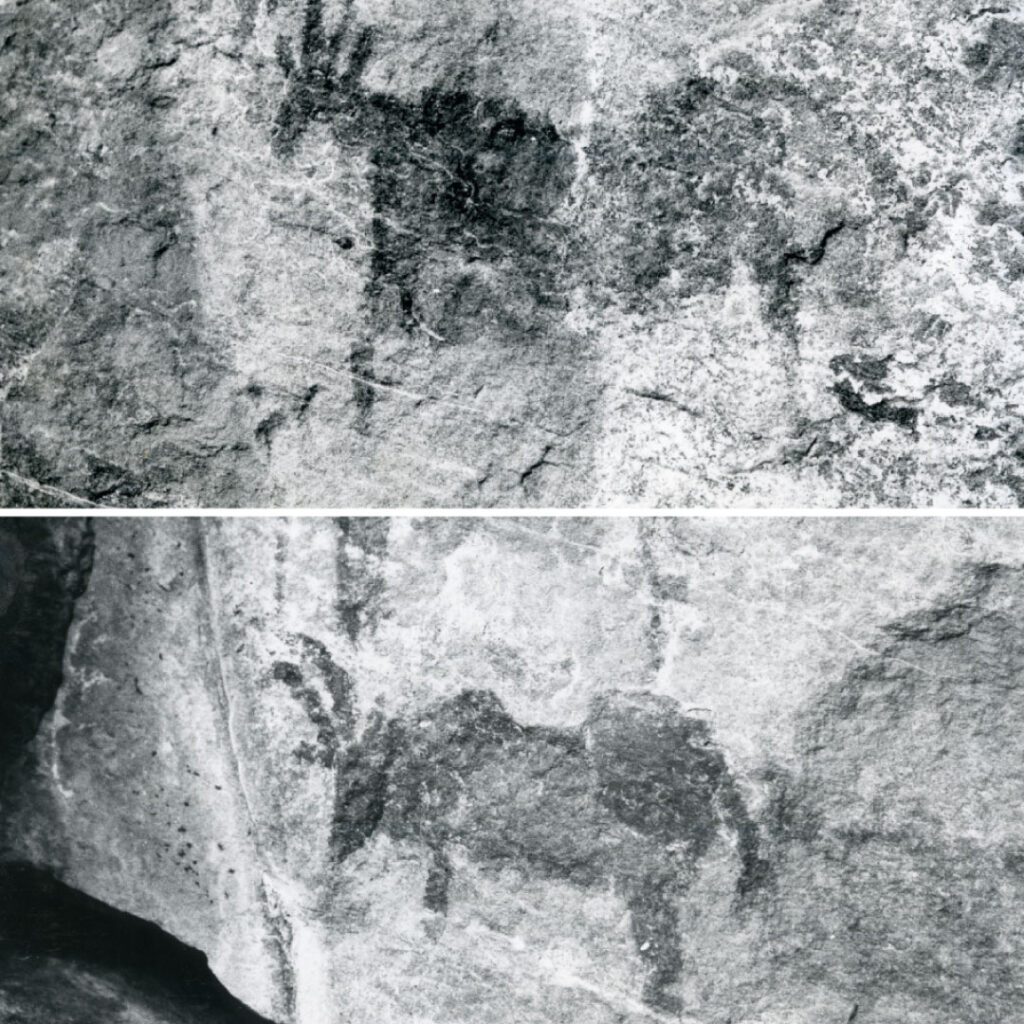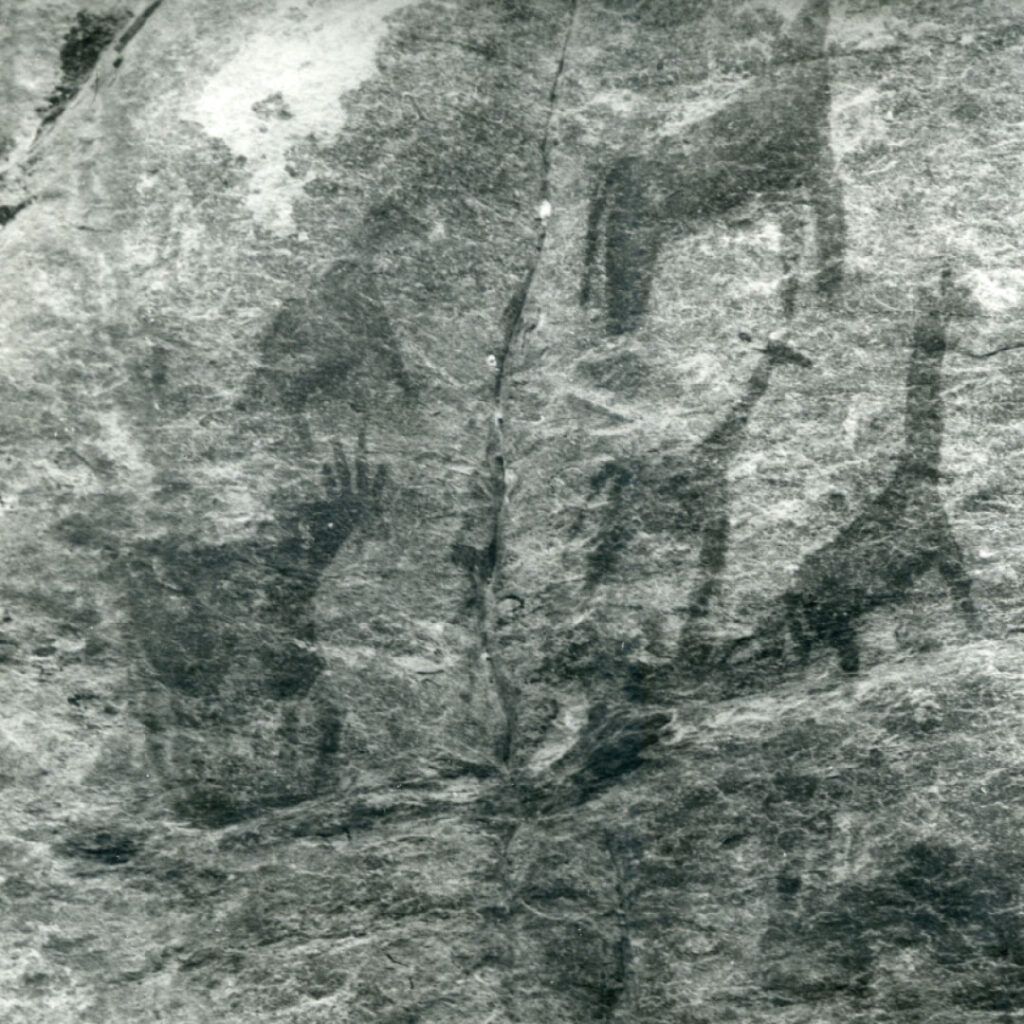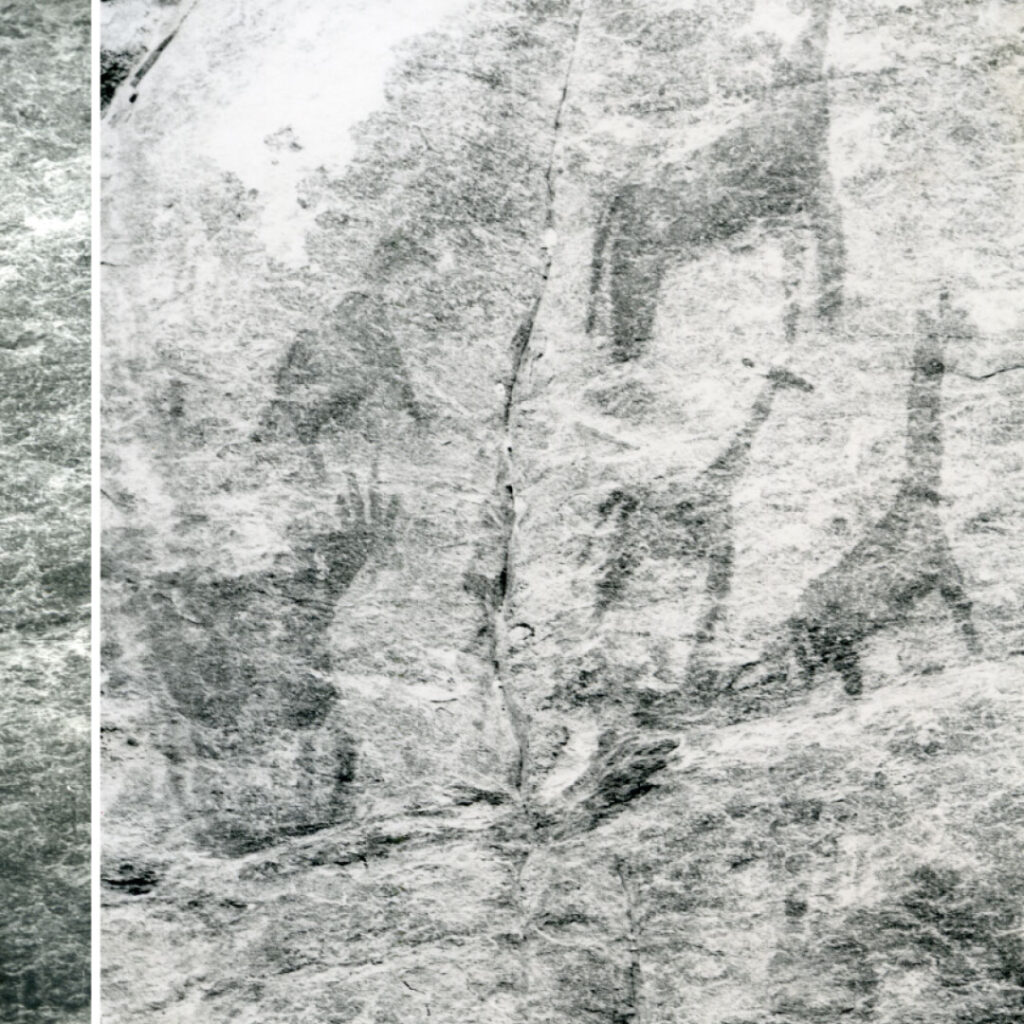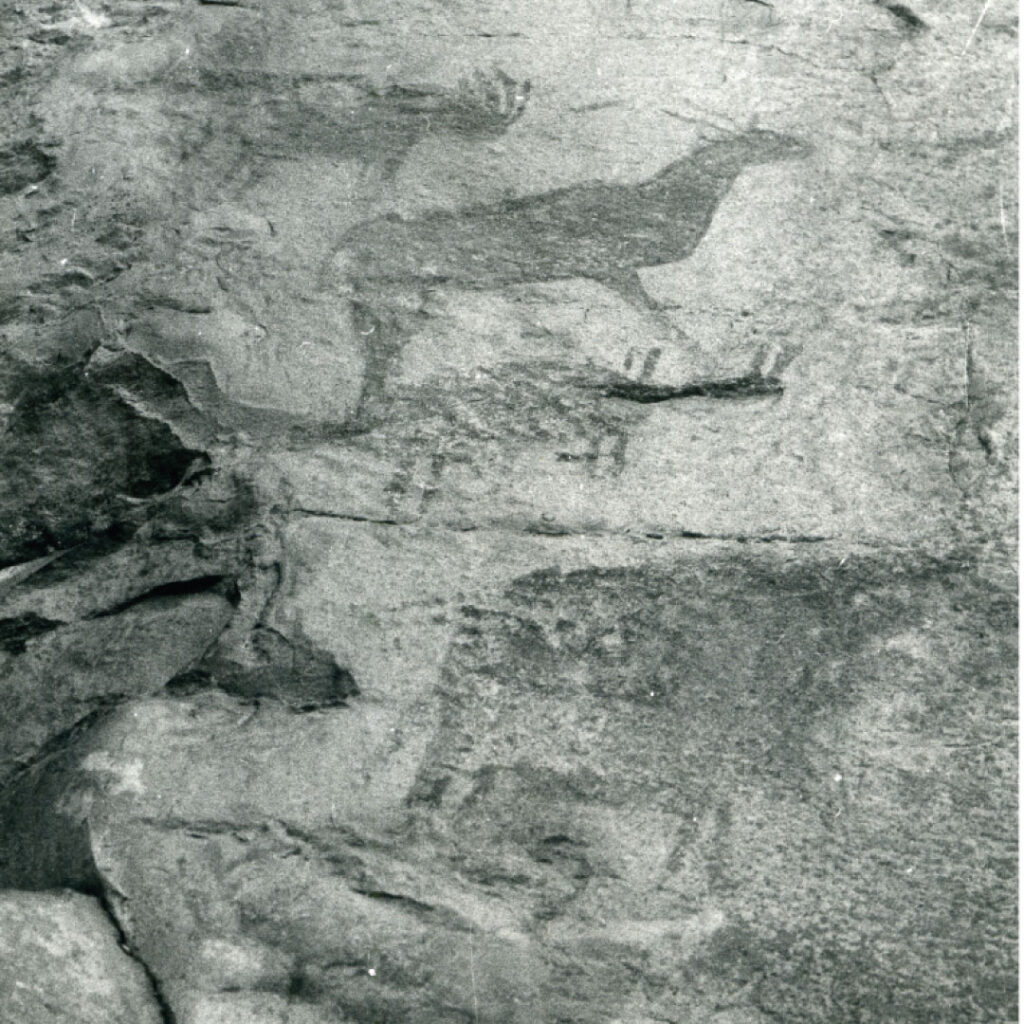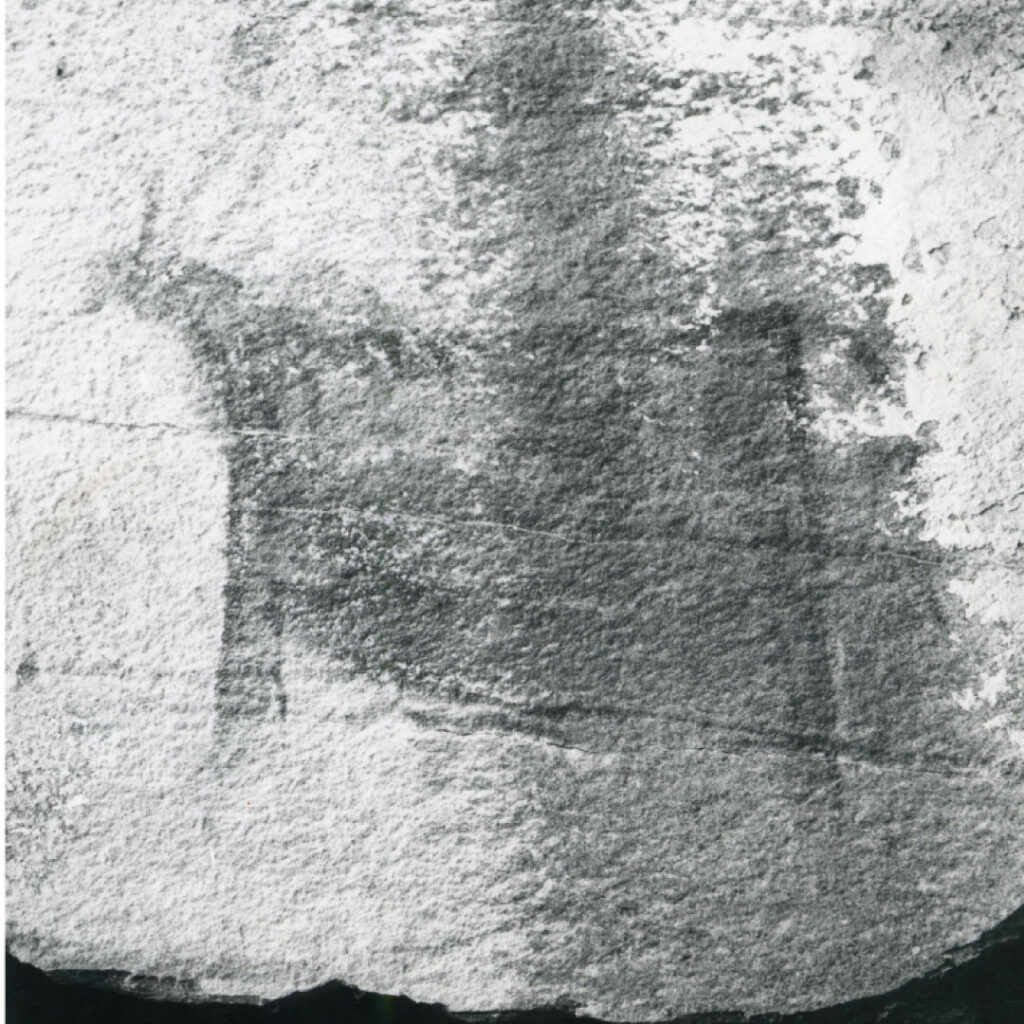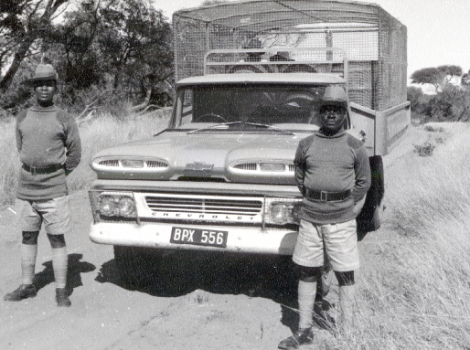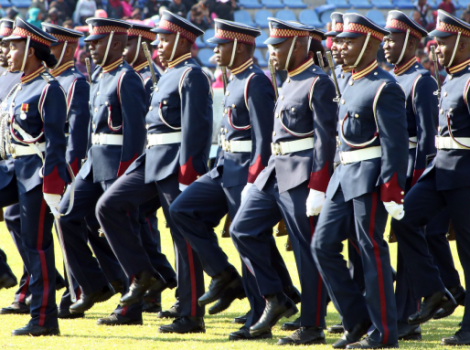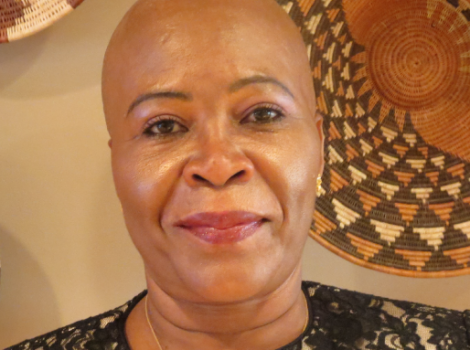The images above (taken by my father, Donald Brooks) are of the ‘Bushmen’ paintings at the Tsodilo Hills. These images were captured during a visit by my father during a police patrol of the area. I accompanied him on this patrol, and Mojeremane helped me clamber up the rocks. We camped next to the hills in the open with a hunting party, and I was told stories about lions walking through this area during the night.
I thought this through and decided there was no merit in placing oneself on the buffet table for the lions to select their meal, so discussed this with Mojereman. He clearly agreed with my argument and made my bed inside the Land Rover. On seeing this, my father would have none of it, and not only did I have to sleep outside but on the edge of the group closest to the lions’ preferred walking route.
When I awoke the next morning, the hunter sleeping next to me asked whether I saw the lion that slept between the two of us that night! Panic ensued, and it took a while for them to placate me and re-assure me that all was well!
The other feature of our camp was a known Bushman encampment close to our campsite, but despite looking for them, we did not see any Bushmen. But the next morning, all that was missing from our camp was some of our water. One can understand this, considering that water is one of the most precious commodities for the Bushmen.
The video is of my father’s visit to the Tsodilo Hills as part of a police patrol. You will see both of us looking at the Bushman Paintings.
The attached video is of a local gentleman we saw during our visit to the Tsodilo Hills.
Written by Ian Brooks
Ian is Donald Brooks’ son. His father arrived in Maun in early 1962, leaving four years later in 1966. He was a police officer, trained in the UK, but working in the Colonial Service. His brief on being transferred to Maun was to sort out the ‘w’ element; there was a perception that there was insufficient regulation, particularly the hunting of the wild animals, and his task was to bring this under control.
Ian and his siblings were children while in Bechuanaland Protectorate/ Botswana; the younger 3 children were born in Bechuanaland Protectorate. The context is a combination of his own memory of life in Maun as a child, as well as various conversations with his parents over the years about the photographs and life in Botswana while they were there (1958 to 1968).

